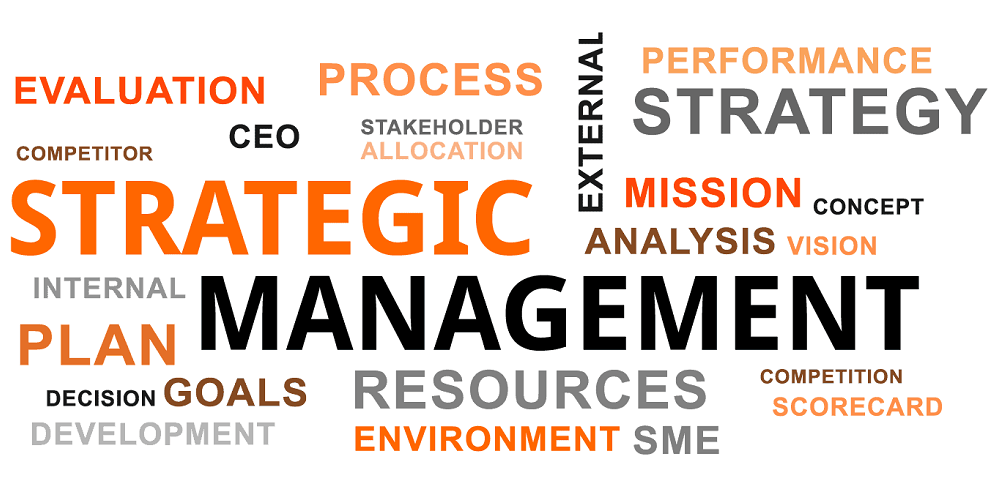
Competitive advantage refers to conditions that allow a company or country to produce a good or service at equal value but at a lower price or in a more desirable fashion. These conditions allow the productive entity to generate more sales or superior margins compared to its market rivals.
Gaining and sustaining Competitive Advantage is particularly important for businesses today.
Businesses are now constantly evaluating how innovation and new advances in technology can assist them to stay ahead of their competition by enabling them to offer new products or services, or in many cases, to do things more efficiently or more quickly.
Why does a user prefer one brand over the other? For example, why would anybody buy an Apple product over a Samsung product?
The answer could be due to “competitive advantage.
Competitive advantage is a set of unique features of a company and its products that are perceived by the target market as significant and superior to the competition. Competitive advantage is achieved when a for-profit company increases its profits significantly, usually through increased market share.
The essence of strategy is innovation ─ something no one has tried before.
It is the reason behind brand loyalty, and why customers prefer one product or service over another.
There are various ways to achieve competitive advantages, such as price, product differentiation, and cost.
- Price – is one of the most influential factors that can affect the company’s profit. Companies can take advantage by reducing and increasing the price of the product, but it is generally taken to have short term benefits.
- Product Differentiation – “When a product or service has a valuable, unique offering for their customer” In order to gain an advantage, a company may differentiate its product from that of the competitor.
- Cost – If the cost of the product is higher than the competitor’s product, then the profit earned by the company will be less. To take an advantage, firms may try to reduce the cost and employ effective techniques of production, so that the firm’s profit will increase.
Many initiatives can be used to gain competitive advantage: Strategic moves often combine two or more initiatives
Eight ways to gain competitive advantage
- Reduce costs
- Raise barriers to market entrants
- Establish high switching costs
- Create new products or services
- Differentiate products or services
- Enhance products or services
- Establish alliances
- Lock in suppliers or buyers
Reduce Costs
Customers want to pay as little as possible for products or services
Reduce costs to lower price
Automation increases productivity → greatly reduces manufacturing costs
Web can automate customer service activities
Companies that are first to adopt advanced systems that reduce labor enjoy competitive advantage until their rivals do likewise
Raise Barriers to Market Entrants
Less competition is better for a company
Gain competitive advantage by making it difficult or impossible for others to produce the same product or service
To lower competition, raise barriers to entrants: Obtain legal protection of intellectual property (copyrights and patents on inventions, techniques, and services). Examples: Amazon’s one-click, Priceline’s online reverse auction
Utilise expensive information systems that are unaffordable to others. Example: airline industries
Establish High Switching Costs
Switching costs: expenses incurred when customer stops buying from one company and starts buying from another
– Explicit: charge customer for switching (early termination of contract)
– Implicit: indirect costs over period of time, such as implementation of new product, staff retraining
High switching costs lock in customers
– Example: proprietary software, such as ERP systems, that have custom modifications
Create New Products or Services
Having a unique product or service gives competitive advantage for a period of time
First mover: organisation that is first to offer a new product or service
– Usually results in superior brand name, better technology, more experience, or critical mass
Critical mass: body of clients that is large enough to attract other clients. Examples: eBay, Apple’s iPhone, Facebook, Twitter, and YouTube
Being a first mover is not a guarantee of long-term success: Netscape, Infoseek
Must continue to improve and innovate to maintain competitive advantage
Differentiate Products or Services
Product differentiation: persuading customers that your product is better than competitors’
– Usually achieved through advertising and customer experience
– Exemplified by brand name success
Examples: Skype, Levi’s jeans, Chanel and Lucky perfumes, and Gap clothes
Enhance Products or Services
Enhance existing products or services to increase value to consumer
Many products and services have been enhanced by use of the Web
– Examples: Charles Schwab and Progressive Casualty Insurance Company
Establish Alliances
Alliance: two companies combining services
– Makes product more attractive
– Reduces costs
– Provides one-stop shopping
Affiliate program: linking to other companies and rewarding the linker for click-throughs
Lock in Suppliers or Buyers
Accomplished by achieving bargaining power
Bargaining power: leverage to influence buyers and suppliers
– Achieved by being major competitor or eliminating
competitors
– Uses purchase volume as leverage over suppliers
Lock in buyers by making them fear high switching costs
BATheories.com is managed by a group of educators from Mumbai. We also manage the website StudyMumbai.com. Our panel includes experienced professionals and lecturers with a background in management. BATheories is where we talk about the various business theories and models for BA (Business Administration) students.